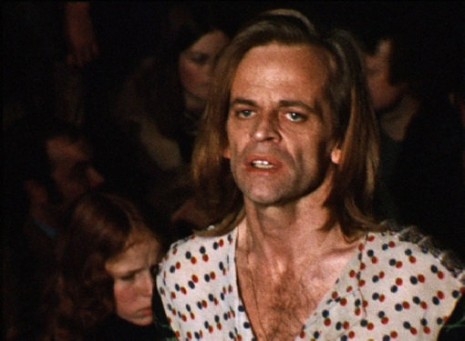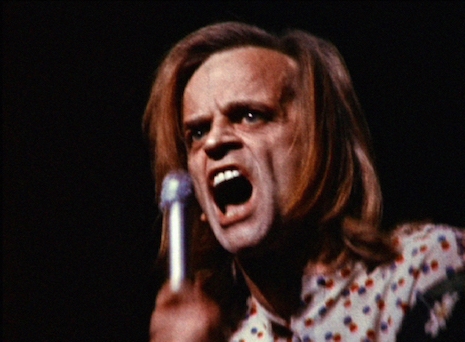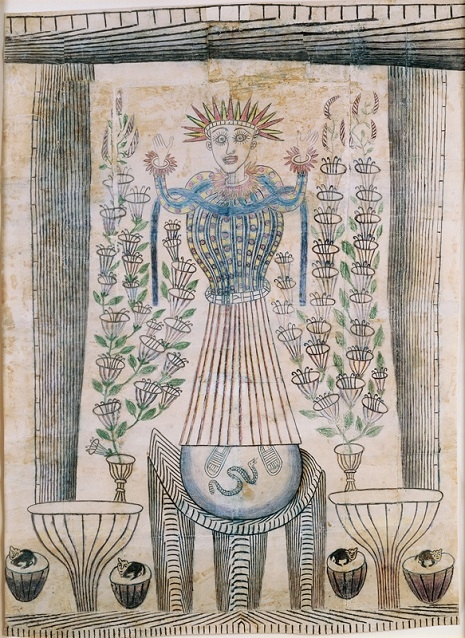
Klaus Kinski had the look of man of a man possessed—a cross between Iggy Pop and a comic book psychopath. It was a look that could convince the unwary he had just escaped from Arkham asylum and was now out for bloody revenge. It was a look earned by painful experience which hid the deeply troubled and sensitive artist underneath.
In truth, Kinski’s mental health was an issue. In the 1950s, he spent three days in a psychiatric hospital where the preliminary diagnosis was schizophrenia—the “conclusion psychopathy.”
He attempted suicide first with an overdose of morphine tablets and then a few days later with an overdose of sleeping pills. One doctor wrote that Kinski was “a danger to the public”:
His speech is violent. In this, his self-centred and incorrigible personality is evident as one that can’t blend in civil circumstances. He remains consistent to his egocentric world view and declares all others prejudiced [...] The patient hasn’t had a job in one year, but still speaks confidently of the new film in which he will star.
Another doctor concluded the young actor showed “signs of severe mental illness.” After a series of insulin treatments, Kinski was released. He believed he was being persecuted which made him all the more determined to make a success of his life.
A few years later, Kinski established himself as an up-and-coming actor in Vienna. But his volatile personality—the anger, the passion that fueled his performances—caused him to be labeled as too difficult. To compensate, and keep a roof over his head, he performed one-man shows reciting Shakespeare, Oscar Wilde and Francois Villon.
He found some financial security as a bit player in movies—most notably the spaghetti western For a Few Dollars More and war films such as A Time to Love and a Time to Die and The Counterfeit Traitor. But Kinski had a talent and an ego that inspired him to hold bolder, greater, more personal ambitions.

In 1971, Kinski hired the Deutschlandhalle to perform his own 30-page interpretation of the life of Jesus Christ—Jesus Christus Erlöser (“Jesus Christ Saviour”). It was no ordinary show. It attracted an audience of diametrically opposed fans—radical students, religious followers and those intrigued to just see the “madman Kinski” did next.
A production about Jesus Christ by one of Germany’s most notorious actors was bound to cause confusion and controversy. Some of the audience seemed to think Kinski was evangelizing, rather than interpreting a role. This led to constant heckling from the spectators. The Christians thought he was blaspheming. Those on the Left thought he was a snake oil salesman for Christianity. Kinski was doing none of this. His Christ was part Kinski, part revolutionary, and part troubled soul. As the audience heckled, Kinski responded to the abuse, as Twitch Film notes:
[A]fter someone stated that shouting down people who disagreed with him was unlike Christ, Kinski responded with a different take on how Christ might respond: “No, he didn’t say ‘shut your mouths’, he took a whip and beat them. That’s what he did, you stupid sow!”
He challenged the audience: “can’t you see that when someone lectures thirty typewritten pages of text in this way, that you must shut your mouths? If you can’t see that, please let someone bang it into your brain with a hammer!” The evening’s festivities also turned physical as an audience member is shown getting bounced from the stage by a bodyguard. Someone responds that “Kinski just let his bodyguard push a peaceful guy, who only wanted to have a discussion, down the stairs! That is a fascist statement, Kinski is a fascist, a psychopath!”

Kinski was unbowed:
I’m not the official Church-Christ, who is accepted by policemen, bankers, judges, executioners, officers, church-heads, politicians and other representatives of the powers that be. - I’m not your super-star!
In a filmed interview, Kinski was asked whether in light of the popularity of such shows as Jesus Christ Superstar and Godspell if he was merely riding a fashionable wave to win popularity. Kinski replied he’d had the idea of making a play out of Christ’s life for some time.
I originally had this idea twenty years ago. When I was six years old I received my only praise…usually I got punished in school…I got praised because I learnt the New Testament by heart, I didn’t really understand it but I was just good at learning texts by heart. But accusing me of riding a popular wave is just plain stupid—it was already in the papers twelve years ago that I’m going to interpret the New Testament and already twelve years ago people were annoyed with me because of that. And what do you mean by “riding the popular wave”? I’m a good rider, but on a horse.
Kinski thought the church distorted the New Testament “with murderous intent—because the church, as everyone knows, did interpret it to fit their intentions.”
More Klaus Kinski after the jump…









